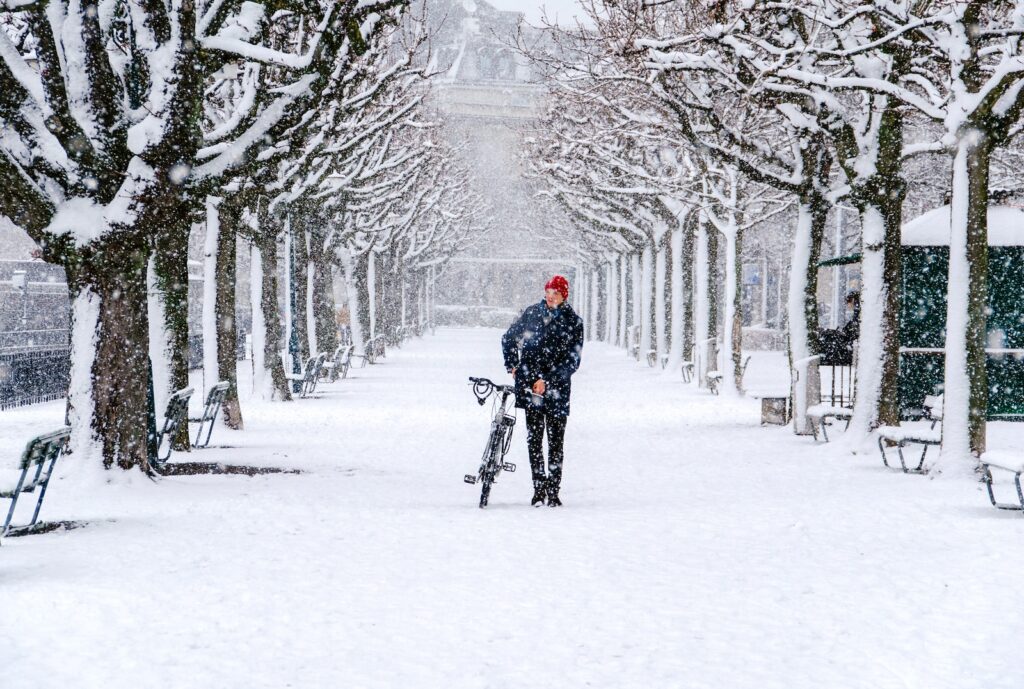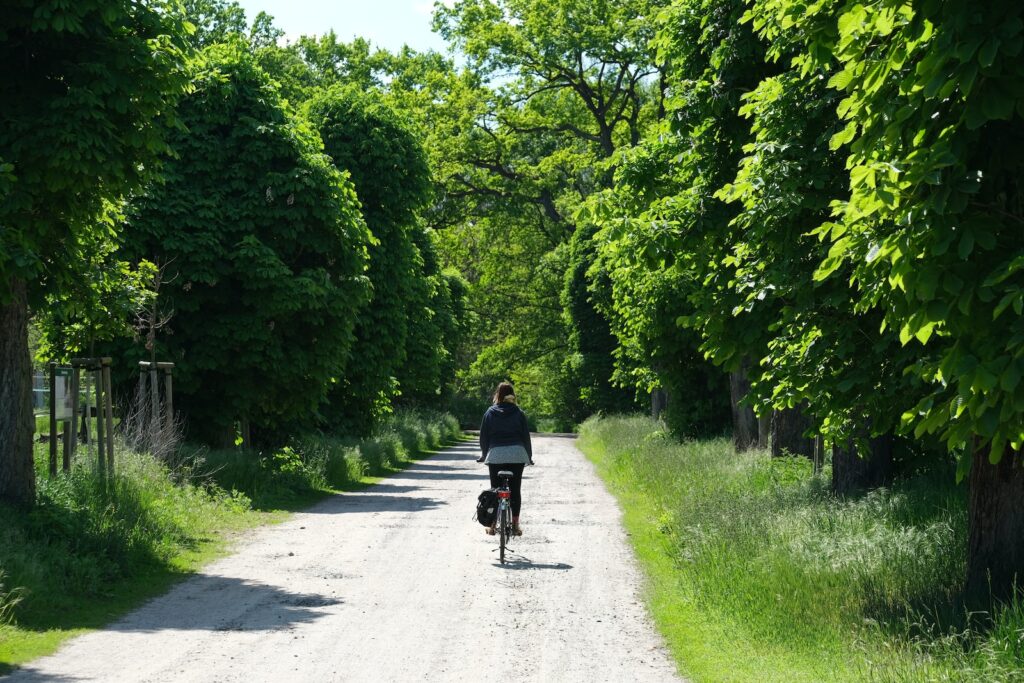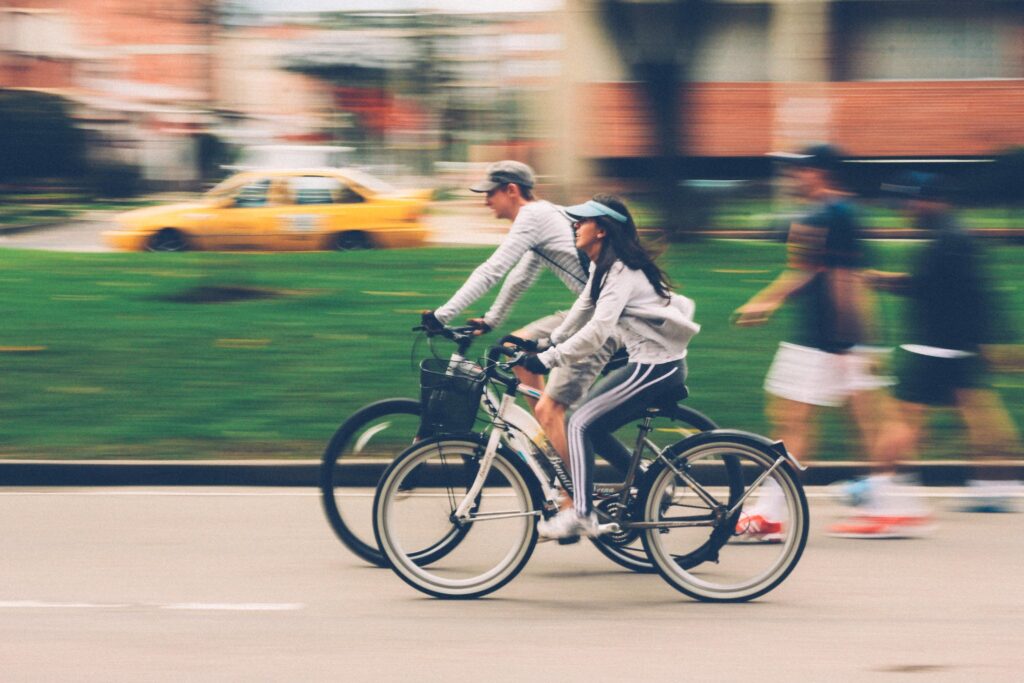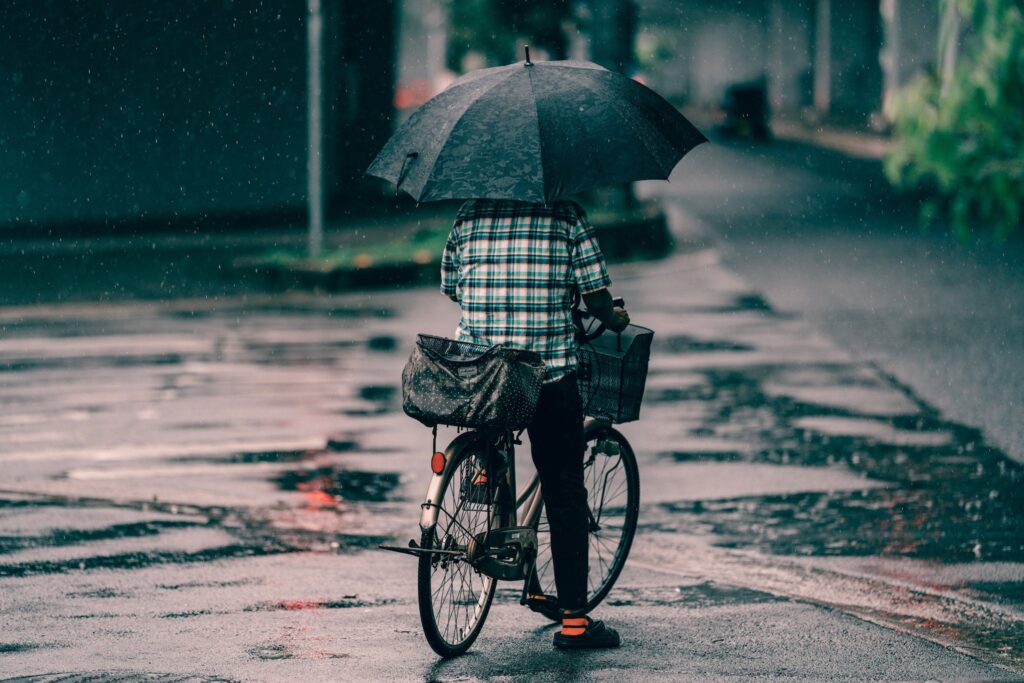Winter bike commuting can be a challenging but rewarding experience. As someone who has been commuting by bike year-round for several years, I can attest to the benefits of staying active and avoiding traffic during the winter months. However, there are some important considerations to keep in mind when biking in cold, snowy, or icy conditions.
One of the most important aspects of winter bike commuting is staying warm and dry. This means investing in appropriate clothing and gear, such as insulated jackets, waterproof pants, and sturdy boots. It’s also important to keep your extremities warm, with gloves, hats, and warm socks. In addition to clothing, it’s important to make sure your bike is equipped with appropriate tires and brakes for winter conditions, as well as lights and reflectors for visibility in low-light conditions.
Table of Contents
Understanding Winter Bike Commuting
Winter bike commuting can be a great way to stay active, save money on transportation, and reduce your carbon footprint. However, it can also be challenging and requires careful preparation. Having bike-commuted through several winters, here are some insights I’ve gained:
Dressing for Winter Bike Commuting
Dressing appropriately is crucial for winter bike commuting. You want to stay warm and dry, but you also don’t want to overheat and sweat too much. Layering is key. Here are some tips:
- Start with a moisture-wicking base layer to keep sweat away from your skin.
- Add a mid-layer for insulation, such as a fleece or down jacket.
- Wear a windproof and waterproof outer layer to protect you from the elements.
- Don’t forget gloves, a hat or headband, and warm socks.
Bike Maintenance for Winter Bike Commuting
Winter conditions can be tough on your bike. Here are some things you can do to keep your bike in good shape:
- Keep your bike clean and dry to prevent rust and corrosion.
- Use a lubricant specifically designed for winter conditions on your chain and other moving parts.
- Check your tire pressure regularly. Lower pressure can provide better traction in snow and ice, but too low can increase the risk of a flat tire.
- Consider getting studded tires for better traction on icy roads.
Essential Gear for Winter Bike Commuting
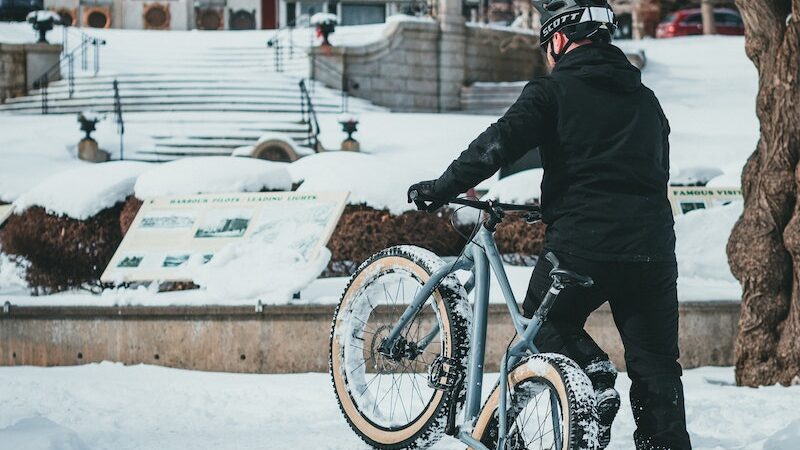
Winter biking can be a fun and rewarding activity, but it requires the right gear to keep you safe and comfortable. In this section, I will cover the essential gear you need for winter bike commuting.
Choosing the Right Bike
When it comes to winter biking, having the right bike can make all the difference. A fat bike or a mountain bike with wide tires is a good choice for navigating snow and ice. If you don’t have a fat bike, consider replacing your regular tires with studded ones for better traction. I wouldn’t recommend using a road bike, as its thin tires can pose risks in wintry conditions. In fact, I’ve seen numerous hip fractures resulting from such choices.
Bike Tires
Choosing the right tires for winter biking is crucial. Look for tires with a low-pressure rating and good traction. Studded tires are also a great option for riding on icy roads. Remember to check your tire pressure regularly, as cold weather can cause tires to lose pressure faster.
Visibility and Lighting
Visibility is key when biking in the winter, especially during dark hours. Make sure you have bright, reflective clothing and accessories, such as jackets, helmets, and gloves. Invest in a good set of lights, including front and rear lights, to ensure you are visible to other road users.
Brakes and Braking
Winter biking can be challenging when it comes to braking. Make sure your brakes are in good condition and consider upgrading to disc brakes for better stopping power. Remember to brake gradually and avoid sudden stops, as this can cause your bike to slide on icy roads.
Bike Accessories
Investing in the right bike accessories can make your winter biking experience much more comfortable. Consider adding fenders to your bike to keep you dry and mudguards to prevent mud and snow from getting on your clothes. A rear rack is also useful for carrying extra layers and gear.
Preparing for Weather Conditions
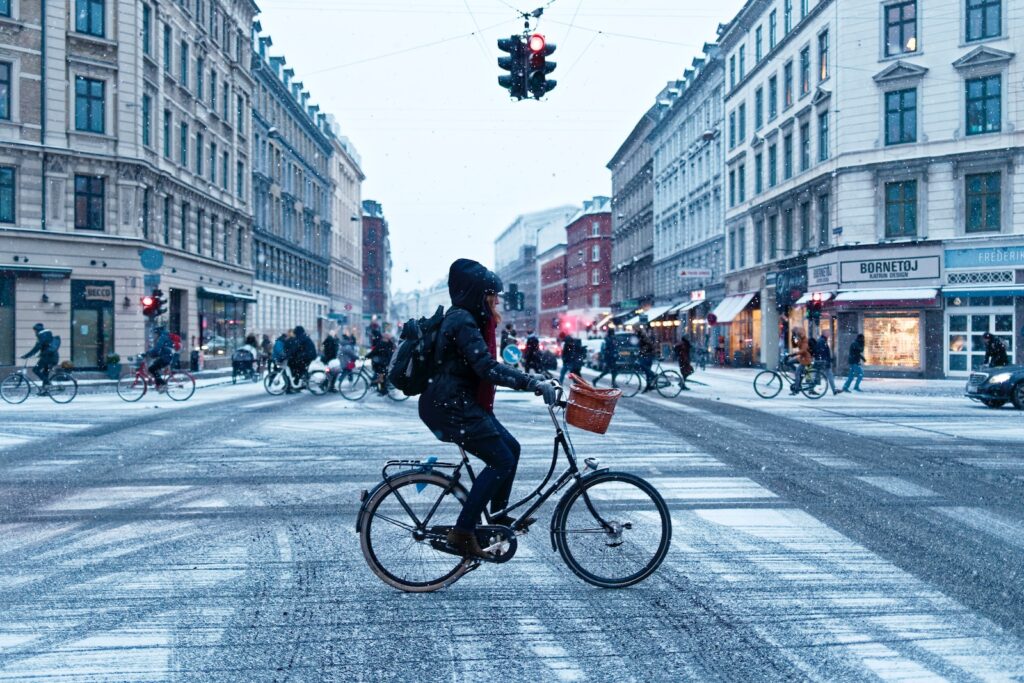
As a winter bike commuter, it’s important to prepare yourself and your bike for a variety of weather conditions. Here are some tips on how to deal with cold and snow, handle ice and slippery conditions, and ride in rain and bad weather.
Dealing with Cold and Snow
When it comes to cold weather, layering is key. Wear a base layer that wicks away moisture, a mid-layer for insulation, and a top layer that is windproof and waterproof. Don’t forget to cover your extremities, such as your hands, feet, and head. Thick mittens or gloves, wool socks, and a warm hat are essential to keep you warm during your ride.
Handling Ice and Slippery Conditions
Ice and slippery conditions can be dangerous for cyclists. Slow down and be cautious when riding in these conditions. If there’s black ice, which can be difficult to see, try to avoid it or ride over it as slowly and carefully as possible.
Consider using winter-specific bike gear, such as neoprene shoe covers or spiked pedals, to improve your grip and stability. If you’re still feeling unsure, consider walking your bike in particularly slippery areas.
Riding in Rain and Bad Weather
Rain and bad weather can make for a challenging commute. Make sure you have a waterproof jacket and pants to keep you dry. Consider wearing a helmet cover to keep rain from dripping down your neck.
Make sure your bike is equipped with good lights and reflectors to increase your visibility in low-light conditions. If you’re dealing with heavy rain, be cautious of puddles and standing water, which can hide potholes or other hazards.
Safety Measures for Winter Bike Commuting
Winter conditions can make bike commuting more dangerous. Here are some things you can do to stay safe:
- Slow down and give yourself more time to stop.
- Use lights and reflective gear to make yourself more visible to drivers.
- Avoid riding in the middle of the road, where cars are more likely to be moving.
- Watch out for black ice, which can be hard to see and very slippery.
Visibility and Road Conditions
During the winter months, visibility can be poor due to snow and ice on the roads. It’s important to wear bright and reflective clothing to increase your visibility to drivers. Additionally, it’s essential to equip your bike with lights and reflectors to make sure that drivers can see you on the road.
Road conditions can also be hazardous during the winter months. Make sure to ride on plowed roads and bike trails to avoid slipping on ice or snow. If you’re unsure about the road conditions, consider walking your bike until you reach safer terrain.
Avoiding Sudden Movements
Winter weather can make it challenging to control your bike, so it’s crucial to avoid sudden movements that can cause you to lose balance. Be sure to brake slowly and steadily, and avoid turning or changing lanes abruptly.
Also, keep a safe distance from other vehicles on the road. This will give you enough time to react to any sudden movements by other drivers.
Navigating Manhole Covers and Sidewalks
Manhole covers and sidewalks can be particularly treacherous during the winter months. Manhole covers can be slippery, and sidewalks may be covered in snow and ice.
When navigating manhole covers, try to ride over them as perpendicularly as possible to avoid slipping. When riding on sidewalks, be sure to take it slow and steady, and avoid sudden movements that can cause you to lose balance.
By following these safety measures, you can help ensure your safety while winter bike commuting. Remember to always wear the appropriate safety gear, and to keep an eye on the weather and road conditions.
Planning Your Winter Bike Commute
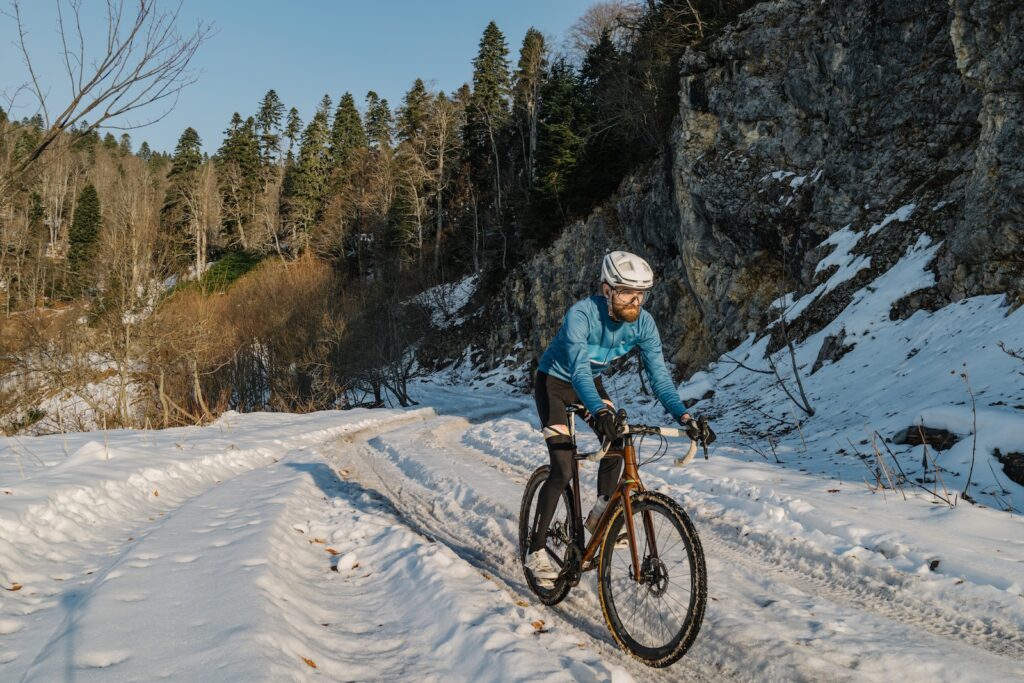
When it comes to winter bike commuting, planning is key to ensure a safe and comfortable ride. In this section, I’ll cover two important aspects of planning your winter bike commute: choosing routes and trails and considering storage options.
Choosing Routes and Trails
During winter, some roads and trails may be more dangerous or difficult to navigate due to snow, ice, or reduced visibility. It’s important to choose a route that is safe and comfortable for your skill level and the weather conditions. Here are some tips for choosing winter bike commuting routes:
- Look for roads and trails that are regularly plowed and salted.
- Avoid steep hills and sharp turns if possible.
- Consider taking bike lanes or paths that are separated from traffic.
- Plan your route based on the time of day you’ll be commuting. In the winter, daylight hours are shorter, so make sure your route is well-lit if you’ll be commuting in the early morning or evening.
It’s also a good idea to test out your route before committing to it. Take a trial ride on a weekend or day off to get a sense of the terrain and any potential hazards.
Considering Storage Options
Storing your bike during the workday is an important consideration for winter bike commuting. Many workplaces have indoor bike storage options, but if yours doesn’t, you may need to get creative. Here are some storage options to consider:
- Bring your bike inside your workplace or office if allowed.
- Use a bike lock and park your bike in a secure, covered area outside.
- Look for public bike parking facilities near your workplace.
- Consider investing in a folding bike that can be easily stored under your desk or in a closet.
By planning your winter bike commute with these factors in mind, you can enjoy a safe and comfortable ride even in cold and snowy conditions.

